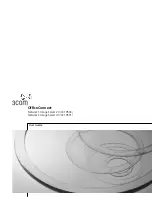
Installing a Smart Array type-p controller in the secondary riser cage
CAUTION:
The maximum inlet ambient temperature for most components installed in the system is
35°C (95°F). Some components, however, are subject to thermal limitations depending on the
chassis model and the fan configuration. There are some hardware configurations where it is
necessary to limit the number of drives installed in the chassis. For more information, see
.
Prerequisites
• Before you perform this procedure, make sure that you have a T-15 Torx screwdriver available.
• If you are installing a Smart Array P-class Gen10 controller, an energy pack option is required. For
more information, see the chassis user guide on the Hewlett Packard Enterprise website (
www.hpe.com/info/DX2000Gen10-docs
).
• Before you perform this procedure, perform the following steps:
1.
Back up data on the system.
2.
Close all applications.
3. Update the server firmware if it is not the latest revision
.
4.
Do one of the following:
◦ If the new Smart Array is the new boot device, install the device drivers.
◦ If the new Smart Array is not the new boot device, go to the next step.
5.
Ensure that users are logged off and that all tasks are completed on the server.
CAUTION:
In systems that use external data storage, be sure that the server is the first unit to
be powered down and the last to be powered back up. Taking this precaution ensures that the
system does not erroneously mark the drives as failed when the server is powered up.
Procedure
1.
2.
Disconnect all peripheral cables from the server.
3.
Remove the server from the chassis
on page 19.
4.
on page 21.
5.
on page 22.
6.
Remove the secondary riser cage
on page 27.
7.
Remove the secondary riser slot blank.
58
Hardware options installation
















































